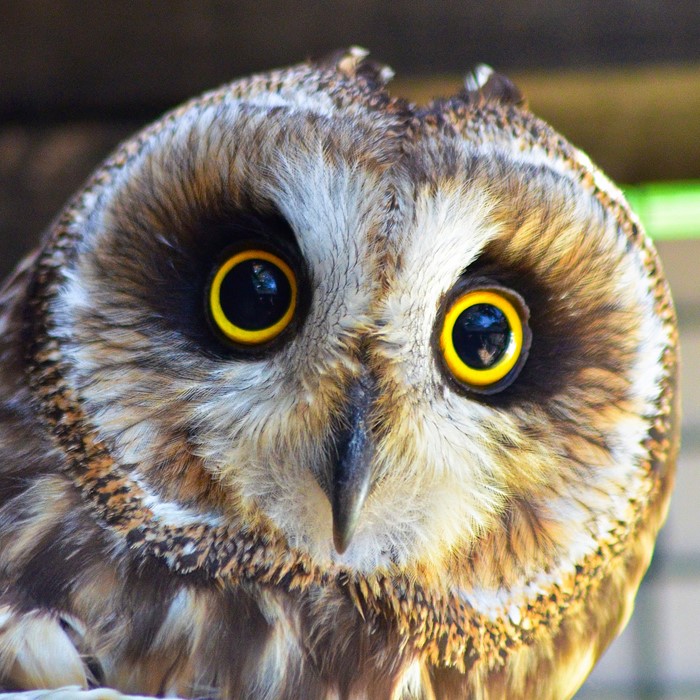
Short-eared Owl
"Kasupi"
Our Short eared Owl was given to us by a lovely lady with a passion for Short-eared owls. Kasupi is one of the last remaining owls of her species in captivity here in the UK, so she's living with us so we can try to find her a boyfriend.
SHORT-EARED OWL FACTS
Asio flammeus
TERRITORY/LOCATION
One of the world's most widely distributed owls, short eared owls can be found throughout much of North America and Eurasia.
HABITAT
Short-eared Owls inhabit wide open spaces such as grasslands, prairie, agricultural fields, salt marshes, estuaries, mountain meadows, and alpine and Arctic tundra.
CONSERVATION STATUS
Least Concern

DIET
Small mammals deer mice, shrews, ground squirrels, pocket gophers, pocket mice, moles, rats, bats, rabbits, and muskrats are also taken. but sometimes take birds
SIZE/WEIGHT
The short-eared owl is a medium-sized owl measuring length 34–43 cm, weighing 206–475 g Females are generally much larger than males. The wingspan of adults ranges from 85 to 110 cm.
NESTING
Breeding season in the northern hemisphere lasts from March to June, peaking in April laying 1-11 eggs. Sexual maturity is attained at one year. Nesting on the ground in prairie, tundra, savanna, or meadow habitats. Nests are concealed by low vegetation, and may be lightly lined by weeds, grass, or feathers.
LIFE EXPECTANCY
4-5 years old is the Average age in the wild
21 years Oldest record in the wild
SCIENTIFIC
CLASSIFICATION
KINGDOM
Animalia
PHYLUM
Chordata
CLASS
Aves
ORDER
Strigiformes
FAMILY
Strigidae
GENUS
Asio
SPECIES
A. flammeus
DID YOU KNOW?
Short-eared owls have keen vision, especially in low light. They also use their excellent sense of hearing to help locate and capture prey. This species is threatened by the diminishing area of marshes, bogs, and open grasslands.
